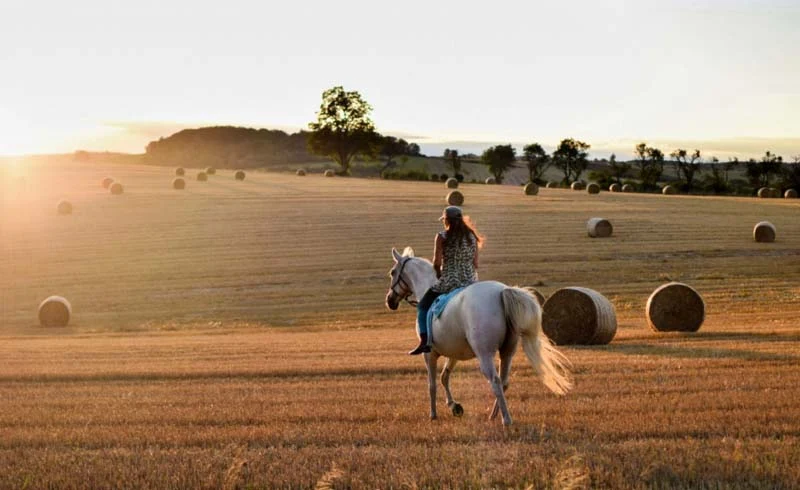
By Ian Centrone, TripSavvy
Writer and photographer Ian Centrone details helpful tips and tricks to keep for capturing photos of moving objects in the future.
01
Writer and photographer Ian Centrone details helpful tips and tricks to keep for capturing photos of moving objects in the future.
01
Set the Scene

Great photography should not simply depict a scene – it should be able to tell a larger story by creating a sense of place and transporting the viewer to that exact moment in time. Some subjects are notoriously more difficult to photograph than others, and this includes capturing objects in motion. Whether you are trying to snap a shot of marathoners crossing the finish line, a train barreling down the tracks, or a bird soaring through the sky, being able to capture that sense of movement and your ability to set the scene will ultimately lead to a more engaging final product.
02
Know Which Effect You Want

There are many different ways skilled photographers create and capture movement in their photos. Deciding what final effect you want to convey will determine which techniques you should use to achieve the best result. For example, in the train example above, do you want the train to be in focus with the trees blurred in the background? Or, do you want the trees to be perfectly still with the train blurry and bulleting through the image? Both examples leverage motion to enrich the photograph, but each requires a different approach. Understanding which effect you want to capture will determine the techniques you will need to implement.
03
Adjust Your Shutter Speed

The shutter speed, also known as “exposure time,” determines how long your camera’s shutter will stay open and expose your film or camera sensor to light. Naturally, adjusting the shutter speed provides vastly different outcomes. A fast shutter speed will allow you to achieve a sharper focus on the moving subject and blur the background, while a slower shutter speed will allow more light in, creating a blurred result on your moving subject. Try setting different shutter speeds to find the best option for the final look you want to capture.
04
Experiment with Aperture

One issue that photographers tend to encounter when using a slower shutter speed is excess light. More light is able to enter your camera since the shutter is remaining open for a longer period of time, which can create an overexposed effect. One way to minimize this is to modify your camera’s aperture. Aperture refers to the opening of the lens’s diaphragm, which allows light to pass. This is calibrated in f/stops and will be depicted as numbers such as 1.4, 2, 2.8, 4, 5.6, 8, 11 and 16. The larger the aperture, the more light will enter, but it can be reduced easily in your settings to help minimize overexposed images.
05
Trust Your Tripod

Once you have your shutter speed and aperture perfected, you can start snapping away. Using a tripod to secure your camera is another helpful hint that photographers use when photographing objects in motion. Tripods are effective at keeping your camera perfectly still during long exposures when your shutter speed is slow and open for an extended amount of time. This will help your background stay crisp and in focus while the moving object receives the blurred effect.
06
Plan to Pan

Alternately, panning is a technique that will enable you to capture the opposite effect. When panning, photographers move their camera along with the moving subject. This tends to be a bit trickier, and the best results will occur when you can essentially match your camera’s movement with the speed and direction of the object in motion. To capture a runner and create a blurred background, you would want to move your camera along with the person as they pass in front of you. This one is harder to perfect, but it’s a valuable technique to keep in your arsenal of photography tools.
07
Practice Makes Perfect

That brings us to the final tip, which is to practice, practice, practice. Mastering the art of photography does not happen overnight, so don't get discouraged as you learn and tinker with new techniques. But alas, the most effective way to sharpen your skills and grow as a photographer is to practice as much as possible. Experiment with your camera settings, utilize the pointers mentioned above, and practice shooting a variety of different moving subjects. By following these tips, you will gain the confidence and experience needed to capture that perfect action shot every time.
![[feature] tech-and-gear](https://blogger.googleusercontent.com/img/b/R29vZ2xl/AVvXsEhVB-XEHEj3tUmgdrwNajr7h8Ao8uwO9li0I4dojtPjL3ZiW-rneYDlEUF5lNKqb9l07LKOge7gzP6pfFK4qkZRMGFoGD_h_MenWLOoKUmlO3F5F8LwSGZVUFNpwvt8RlciyMgMUXHuNQV1/s1600-rw/dearjulius.com1.jpg)
























